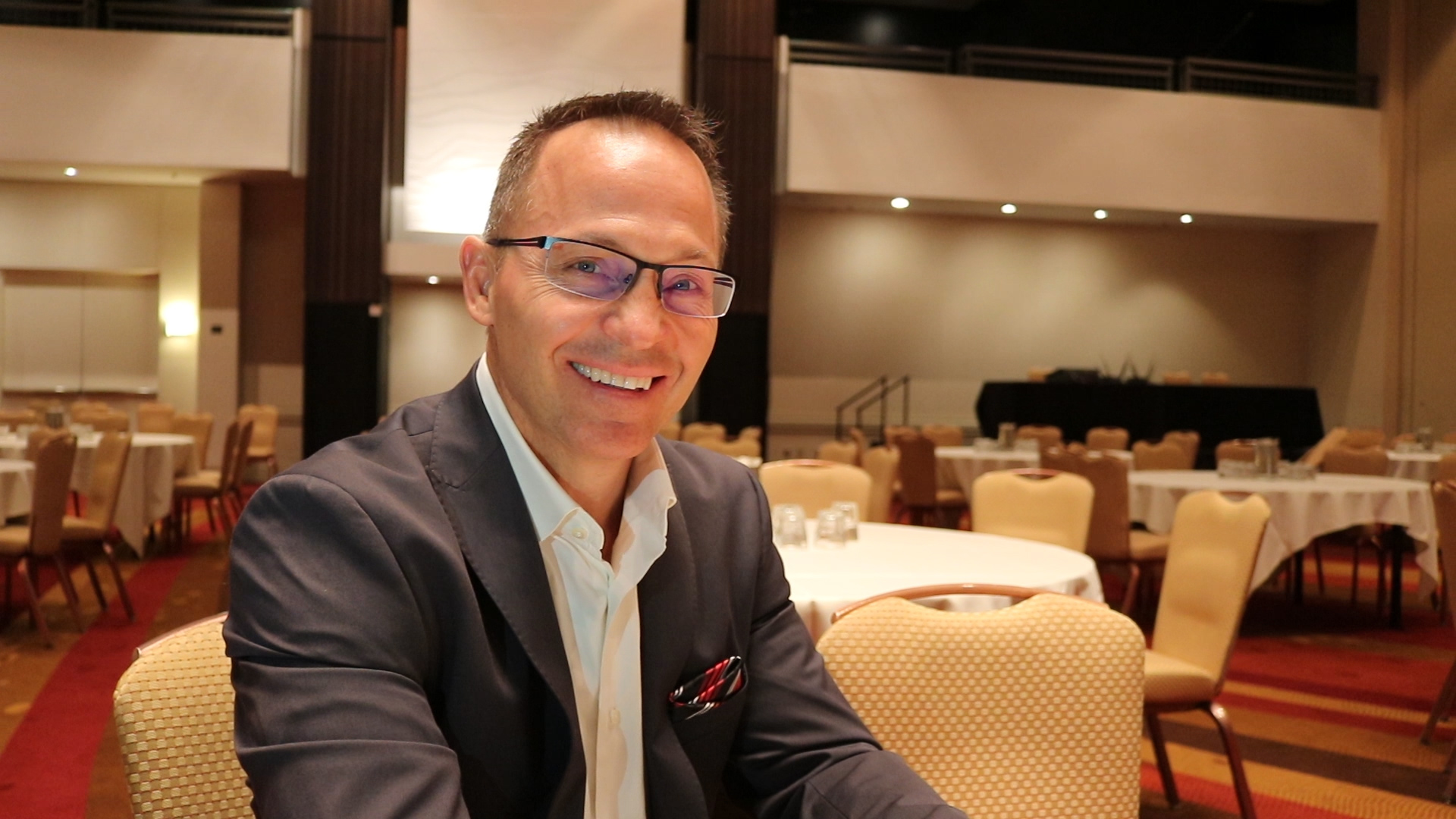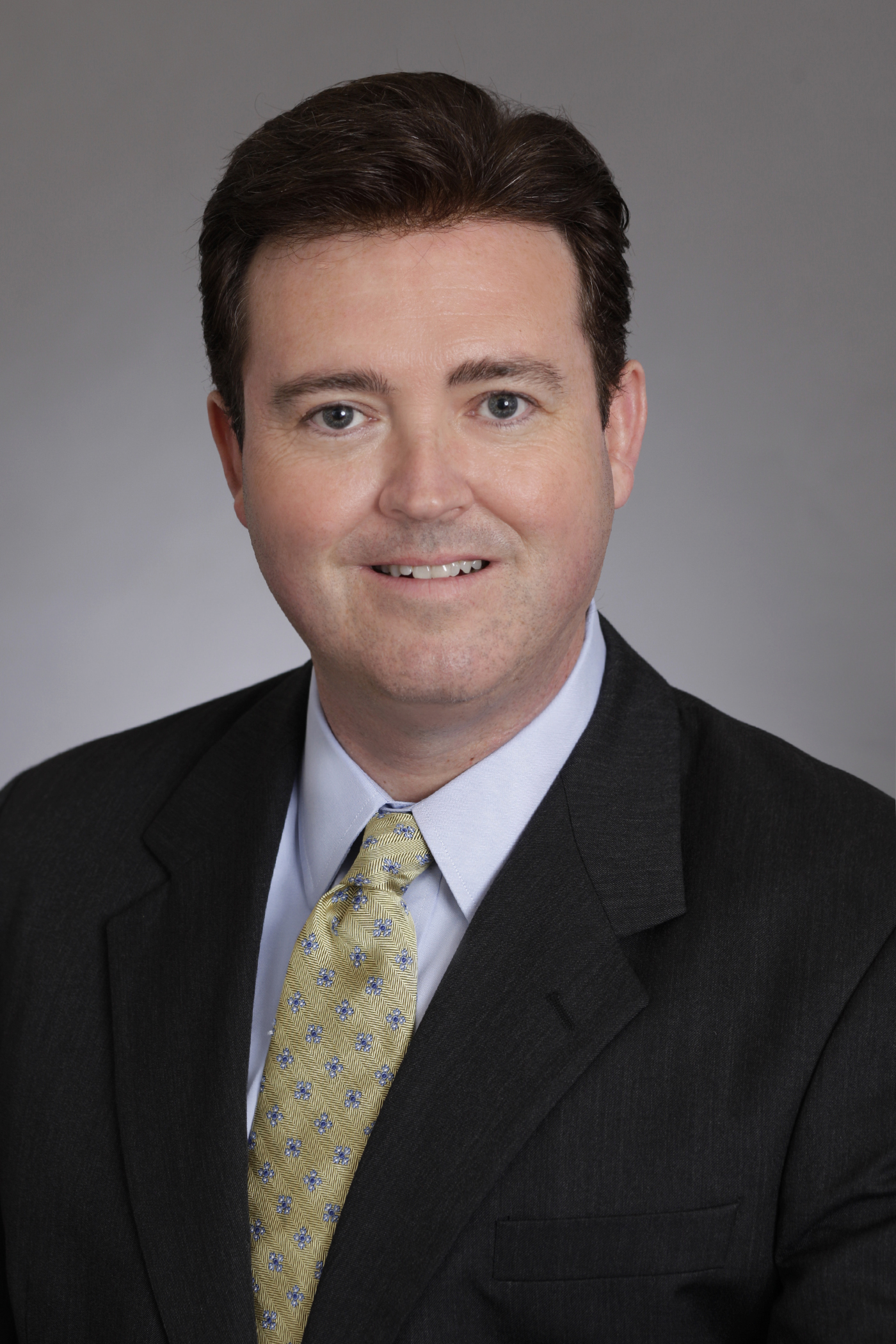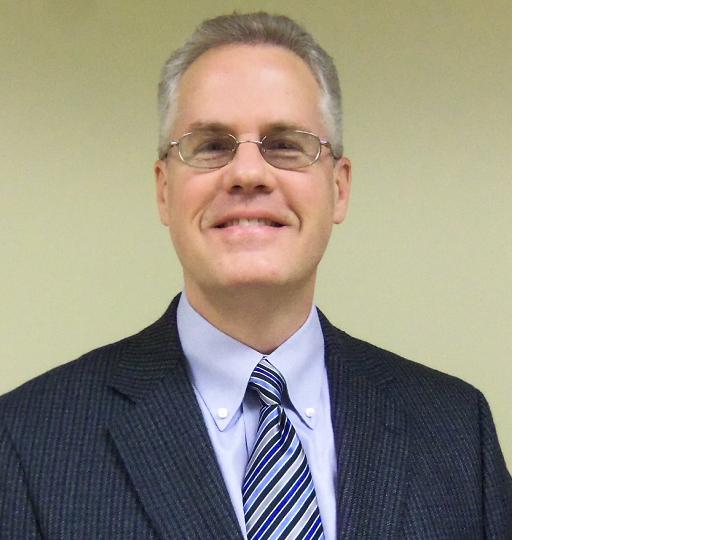Many employers struggle with trying to provide affordable healthcare to their employees. Traditionally, employers’ solution is to select a medical vendor who touts the deepest provider discounts. Discounts do save money, when used to buy groceries, appliances, or other consumable goods; however, maybe not so much with healthcare. Why is this? The “true” cost of services can be hidden under a layer of fees and add-ons and may also vary between regions and facility types. Therefore, a discount from an unknown cost may not always control costs, especially if the unknown cost is continually changing. That may also explain why employers, year after year, are having to deliver premium increases to their members, or absorb the cost. When that occurs, employers may need to think outside the box to meet those needs.
Reference Based or Transparent Pricing is the concept of identifying and processing a bill for medical services based on a known price point such as Medicare. This information is then used by insurers to determine a “cost +” pricing for all services. The savings realized on specialized care facilities or providers can be substantial, because those areas may have the greatest markup.
How does Reference Based Pricing work? A predetermined “cost +” is outlined prior to claims being processed by the insurance company or TPA (Third Party Administrator). Where Traditional Discount Plans rely on “networks” to steer members to covered facilities, with RBP (Reference Based Pricing), there is no network. Employers pay the same “cost +” amount regardless of where the member receives services. For example, with the Traditional Discount Plan if a member needs an MRI, the member must go to the network facility for services otherwise out-of-network benefits apply. However, with RBP the member may go to any MRI facility and regardless of the amount billed, the payment is the same. The amount the employer would pay using the Traditional Discount Plan in most cases is more than the amount paid using the RBP method.
The reason is based on the markup of services vs the amount of the discount. There is not a lot of room for markup on primary care services; therefore, savings using the RBP model may not be as substantial, but with specialized medicine and urgent care facilities there is no ceiling on the markup applied to claims. For that reason, if employers have a 30% discount using the Traditional Discount Plan, but the facility is billing 400% of Medicare, they probably are not seeing a reduction in their medical spend. 30% of 400% above Medicare means the employer still paid at least 200% more than with the RBP model, which for services related to a premature baby, heart disease and/or cancer could be substantial. Therefore, using the Traditional Discount Plan model the only option available to employers to reduce their healthcare spending is to shift the cost share more to the member by increasing deductibles and premiums.
Using the RBP model is a tried and true method to reduce healthcare costs without employers having to reduce benefits to the member. In fact, members’ benefits may improve by eliminating the deductible in favor of a flat copay. This makes the RBP much easier for the provider and the member to know what is expected at the time of service. Members like the plan because they can go to any provider or facility, and providers like the plan because it eliminates the need for them to be in the collection business.
According to CMS, in 2021 retail drug spend in the US was around $378 billion, which increased by 7.8% from 2020. [1] The cause is due to the increase in the use of prescriptions. In fact, costs for medical and pharmacy spend have increased each year since 1960, which is when CMS started collecting data. That means employers should be looking for “outside-the-box” ways to provide benefits including pharmacy. Many Traditional Discount Plans will advertise the “rebates” and throw out words such as “transparent” and “100 % pass through” as a way to let employers know these plans are serious about saving money on pharmacy costs. What isn’t always disclosed is the shell game with “rebates”. [2] Drug companies partner with PBM (Pharmacy Benefit Managers) or Insurance Companies to have their drug place on the formulary in a preferred status. This encourages members to use their drug instead of other drugs which may be cheaper and more effective. On the back end, the company pays a rebate back to the PBM, which provides those back to the employer. The primary issue with that methodology is that high-cost drugs listed on the formulary in a preferred placement does not mean those drugs are more effective, which is what many employers, members and even physicians think. In fact, in many cases those preferred drugs are NOT more effective. People might be surprised to know that the FDA’s only requirement for a drug’s effectiveness is whether it is better than a placebo. [3] For this reason, placing a high-cost, possibly ineffective drug on the formulary, just for the rebates does not save on prescription spend and does not help the patient with his or her medical condition.
Comparative Effectiveness Data looks at drugs to determine their effectiveness in treating conditions, and it’s those drugs that have preferred status on the formulary. Excluding high-cost and ineffective drugs may reduce rebates, but the overall savings to the plan can be much greater.
Employers may not realize the tools they have in their toolbox to control healthcare costs and preserve benefits for their members. That is why getting away from the traditional methods of controlling costs where the members’ burden increases either by premium or plan design changes, will not work. Using that method could drive people who are well to go elsewhere for their healthcare needs and creates an atmosphere of discontent for those remaining on the plan. Using Reference Based Pricing to reduce the medical spending, and Comparative Effectiveness Data to determine which drugs should be placed on the formulary, are only two of the many tools available to employers trying to control healthcare costs. The end result is a win-win for the employers and their members.
[1] https://www.cms.gov/newsroom/press-releases/national-health-spending-grew-slightly-2021
[2] https://www.kff.org/medicare/video/prescription-drug-rebates-explained/
[3] https://www.trudatarx.com/what-does-fda-approval-really-mean
*The views and opinions expressed in the Public Risk Management Association (PRIMA) blogs are those of each respective author. The views and opinions do not necessarily reflect the official policy or position of PRIMA.*

By: Karen Naccarato
VP, Customer Support & Business Development for Tennessee, Sherrill Morgan
Summary of Qualifications
Karen has 27 years experience in the area of employee benefits with the school systems in Memphis, Tennessee. In 2013-2014, she saw the merger of Shelby County Schools and Memphis City Schools, which formed one of the largest school districts in the US. She was the benefits manager for approximately 13,000 employees and 12,000 retirees. The following year, six municipal school systems were formed after pulling out from the Memphis/Shelby County schools system. Karen became part of a "shared service" department which managed benefits for the six school systems. A health rust was created that same year to provide benefits for four municipal school districts and three cities. Today, the trust processes approximately $40 million in claims for 7500 employees and their dependents.
Responsibilities
- Plan administrator of $40 million health trust in Memphis, TN
- Point-of-contact for employer-sponsored medical clinics and pharmacy
- Participates in the creation, administration and implementation of the business development strategies
- Participates in the identification, evaluation, solicitation and follow-up with targets through multiple sales, communications and marketing methods such as cold calling, conference attendance, social media, public relations, presentations, etc
- Participates in the initiation and development of relationships with key prospects to identify and meet prospects’ business needs
- Supports the implementation of full sales cycle, including needs analysis, pitch, closing and renewal
- Participates in renewal preparation and periodic meetings for Sherrill Morgan clients
- Provide specific healthcare expertise and relevant experience into the product and services portfolio and strategic planning process as needed
- Responds to RFPs, review plan documents, NDA’s and other contractual agreements, including the preparation of project budgets
Business Experience
- Employee Benefits Supervisor for Bartlett City Schools (2014-2022)
- Benefits Manager for Memphis Shelby County Schools (2013-2014)
- Director of Employee Benefits for Shelby County Schools (1995-2013)
Karen has served on a number of boards including TASBO Board of Directors (2011-2012), TASBO president-elect (2013), CIGNA Board of Diversity (2008-2010).
Professional Affiliations
TASBO (Tennessee Area School Business Official) member (2011-2013)
Education
- Bachelor of Science in Business Administration, University of Phoenix
- Master of Science in Business Administration, Keller Institute of Management
I often think that successful safety programs are driven by the personality of the risk management/safety office within an organization, primarily by safety personnel that are in the field. In my experience, when observing employees conduct their work, I think ignorance is bliss.
What do I mean by blissful ignorance, it’s an opportunity to observe employees and let them tell you their work story, to describe what they are doing. Employees are generally proud of their work knowledge but even if you are well aware of their work process, asking them thoughtful questions about their work invites a positive dialogue. Most employees who are accomplished in their skill level will enjoy teaching you something about their work. It’s also a great opportunity to carefully ask questions about safety procedures. In a confined space situation, you may ask how the confined space gas meter is calibrated, how to read the different detection values etc. – by letting employees teach you.
Before observing personnel, as Scott Geller points out in his “Actively Caring for People” publications, it is critical that you first ask permission before observing. In addition, it helps to tell a division that you will be in the field to look at specific work practices. By giving notice, it helps to eliminate employees’ feeling you are “just trying to catch them” doing something wrong. Also if you walk up on a work situation unexpectedly, you may still be welcomed but helps if you ask to observe.
Back to bliss, no one likes a “know it all” which is why giving the employee the opportunity to explain what they are doing can be balanced by your inquisitively phrased questions that may give direction but subtly. Of course, sometimes you may have to give more assertive direction for failed safety procedures but if you start with learning what they are doing, the more direct intervention may be more appreciated.
You can often tell when a safety point-man does not follow the suggested procedures above when you personally observe an employee work process and immediately receive resistance. The key here is to observe your safety staff to see how they interact, is it collaborative or authoritarian, for example.
Letting employees have the opportunity to tell you what they are doing and why is a positive way to connect with employees and remove any stigma that safety personnel are just looking for the negative. I have the advantage of having limited mechanical skills and I have often used my blissful ignorance to great advantage.
*The views and opinions expressed in the Public Risk Management Association (PRIMA) blogs are those of each respective author. The views and opinions do not necessarily reflect the official policy or position of PRIMA.*

By: Daniel Hurley, CSP, ARM-P, MS, MPA
Risk Manager, City of Chesapeake, VA (Ret.)
Dan was the former risk manager for the City of Chesapeake, VA. He also had a long career with the City of Norfolk, VA as a risk manager for the school board and as the safety officer/workers’ compensation specialist for the city. In between the Cities of Chesapeake and Norfolk, Dan had a two-year stint as a practice leader for Midwest Employers Casualty Company working with school districts. Dan is a past president of both national and Virginia PRIMA and currently serves on the PERI and Virginia PRIMA boards. Dan holds the CSP, ARM-P, MS and MPA designations.
Workplace shootings—and shootings in general—are not going away. In fact, they’ve been on the rise in recent years, even during the pandemic when many workers were at home. According to the Childhood Preparedness Institute, studies have shown that there’s a high rate of attacks after a break in routine. For example, up to 41% of school attacks occur within a week of returning after a break.
As the economy opens back up and more businesses return to in-person work, there’s yet another break in routine. Workers are heading to the office and gathering in group settings again. Forbes reports that mass shootings increased during the pandemic, and researchers hypothesize that stress and pressures were to blame. While some of those stressors have been reduced, others such as financial strain, increased mental health concerns, and civil unrest remain.
This continued stress combined with the return to work increases the likelihood of workplace violence incidents. Stress isn’t going away, so we must adapt. The key is learning how these situations can be prevented or managed to prevent loss of life. This blog will outline three ways to help reduce the chance of a workplace shooting in your business.
Create a respectful, zero-tolerance culture
Prevention of workplace violence starts with day-to-day office culture. In other words, the attitudes and behaviors of the company and its employees. Staff and customer safety must always be the top priority, and policies, communications, and activities should reflect that. Educate and train employees on safety protocols and encourage them to report potential issues they see.
Another important proactive step is to provide mental health resources to employees. Since stress can trigger workplace violence, removing the stigma and encouraging staff to seek support if they need it may prevent volatile situations.
Beyond written policies and plans, leadership must make it clear that there is zero-tolerance for violence or abuse. Create a culture of safety and respect in the workplace and regularly review and discuss policies with employees. Staff will feel more secure, and it will be easier to identify troubling behavior.
Know the warning signs of workplace shootings
While there is no formula for determining who may be a threat or when workplace violence may occur, there are usually warning signs. Some may seem more obvious, such as a coworker losing their temper regularly. But many signs are more subtle, such as withdrawal, paranoia, or disregard for company policies.
Understanding the signs and training staff members to stay alert can help stop a violent incident before it starts. Encourage employees to report potentially problematic behavior to a manager or human resources. It may add some paperwork in the short term, but in the end, it could very well save lives.
Make a plan and train staff regularly
A culture of safety and staff education is crucial, but they are no substitute for an emergency plan. If a workplace shooting does occur, having a plan in place and well-trained staff can help deescalate the situation. As outlined by the Dept. of Homeland Security, employees should be trained on when to evacuate, hide out, or take action against the active shooter. To take this a step further, develop a detailed Emergency Action Plan (EAP) in cooperation with key stakeholders.
An EAP contains several key components and must be tailored to the specific location of the business. Include:
- Evacuation and escape routes
- Roles and responsibilities
- A contact list and notification system
- Information on how to work with local hospitals and law enforcement
Once you’ve documented the plan, hold training exercises to ensure that employees are familiar with their role in the process.
Over time, you’ll discover ways of fine-tuning your EAP, so revisit the document and update it as needed. Lastly, review the plans and refresh staff on training regularly. Spending time and resources on a thorough plan means little if no one can put it into action when it’s most needed.
Work with your insurance provider
Preparation and planning can go a long way toward preventing a violent situation, but even the best-laid plans aren’t a guarantee. The last piece of a comprehensive workplace safety plan is having insurance coverage in case the worst happens.
*The views and opinions expressed in the Public Risk Management Association (PRIMA) blogs are those of each respective author. The views and opinions do not necessarily reflect the official policy or position of PRIMA.*

By: Paul Marshall, CPCU
Managing Director, Active Shooter / Workplace Violence / Crisis Risk Insurance Programs, McGowan Program Administrators
Summary of Qualifications
Paul has 30+ years of insurance and underwriting program management experience. For the last seven years, he has developed and managed one of the largest active shooter/workplace violence/crisis risk insurance programs in the country. Paul has presented at multiple PRIMA conferences, and is a frequent contributor to PRIMA blogs and podcasts as well as national news outlets.
Responsibilities
Paul is responsible for the overall management of the active shooter workplace violence insurance program with his entity.
Professional Affiliations
PRIMA, University Risk Management and Insurance Association (URMIA), Wholesale and Specialty Insurance Association (WSIA), Risk and Insurance Management Society (RIMS)
Education
Bachelor of Science - Miami University (OH)
Click HERE to Read Part 1
Speed and Automation
Technology trends in the claims industry focus heavily on auto-adjudication and claim durations. In a perfect world with tomorrow’s technology, almost all claims could be adjudicated without human review. This would allow them to be completed instantly after the appropriate data is provided by the claimant, medical providers, or the employer. With the increase in AI driven predictive models, many claims might even be adjudicated and paid before all data is provided based on what is most likely or expected.
But this comes with a cost. The pursuit of speed reduces human touch. While some claimants may be pleased with quicker turnarounds, the risk of leaving them feeling “cold” increases. While monetary considerations are important, many injured parties want to believe that a claims examiner cares about them. If the claimant doesn’t feel that empathy, litigation can ensue and costs can increase, irrespective of the initial injury or payment.
Of utmost importance is the ability to walk the line between speed and empathy, adjusting based upon the particulars of the case and the signals provided by the claimant. Claims that are auto-adjudicated need to move to slower, more human-based processes where needed….and vice versa. Successfully managing a claim depends upon on the accurate identification and satisfaction of the claimants’ wants and needs and providing them the level of automation and humanity they desire.
It might also be best to leave the final decisions with humans. New technology can analyze, predict and recommend...but leave the ultimate decisions in the hands of human beings.. No matter how good the technology becomes, it will never be perfect. Thousands of years of human experience has led us to understand that people make mistakes. Marketing, movies, and the speed of technology has also led us to incorrectly expect that machines should not.
Logic: Identify the damages, provide the treatment plan and pay the costs….quickly.
Empathy: Ensure the claimant understands they are not just a number too. Handle the claim at the speed and with the automation appropriate for the case. Be prepared to adapt.
Triage
All this implies that the key to successful claims management is identifying who should be involved and when. Automation needs to be balanced with human involvement. Computers can be effective at triaging claim complexity such as chance of escalation, fraud or other high risk elements, and notifying additional human resources such as supervisors or nurses to better monitor the specific claim situation.
Organizations will be well served by focusing on technology that collects more and better information early in a claim to facilitate this triage. Collecting more data earlier increases confidence in predictions and triage. But, challenges can arise in data collection, claimant availability and overall satisfaction in the process. As long as a human is involved in providing data, challenges will exist in obtaining it early and accurately.
Optimal results will be obtained by providing quick, low touch care when wanted….and more sympathetic human based care when THAT is wanted. Being able to adapt quickly to claimant needs will help to distinguish the “winners” from the “losers” in this space.
Logic: Collect accurate data quickly and determine how best to assist the injured worker.
Empathy: Involve the appropriate human resources when the situation requires it…and preferably before the injured worker becomes frustrated.
Final Outcomes
Data collection should not solely be left to machines. While we might believe that technology makes collecting data easier, it has also been shown that collecting additional information is much easier when the requestors are demonstrably empathic. AI can be better at reading medical images and identifying illnesses but understanding what that means for the patient and how care might be optimized for that individual is still firmly set in the realm of human intelligence.
Treatment plans also play a major role in outcomes. If plans are not followed, prescriptions not taken and therapy not continued, injuries can linger and overall outcomes worsen. Empathic physicians and caregivers have a significant impact on patient adherence to treatment and, in the worst cases, bad news is best delivered with caring.
So long as injured workers are human beings, then human caregivers and examiners will be needed to optimize outcomes after injuries. Success or failure will be driven by how organizations can personalize care based upon the individuals’ needs. Technology will bring speed and accuracy, but empathy will remain in the realm of human beings for all of the foreseeable future.
As Bill Gates once stated: “The advance of technology is based on making it fit in so that you don't really even notice it, so it's part of everyday life.” That doesn’t sound extreme….that sounds balanced.
*The views and opinions expressed in the Public Risk Management Association (PRIMA) blogs are those of each respective author. The views and opinions do not necessarily reflect the official policy or position of PRIMA.*

By: Stephen Elliott, MBA, JD, CISSP, CSM
Senior Vice President, IT Innovation and Decision Optimization, Sedgwick
Stephen is the SVP of IT innovations at Sedgwick in Memphis, TN. In this role, he is driving IT to leverage new technologies and stay ahead of the competition. Previously, Steve has built and led a multi-disciplinary team (140+ team members) supporting the application design, development and maintenance for the disability and leave line of business at Sedgwick. Prior to joining Sedgwick in 2005, Steve worked at Deloitte Consulting and was a partner in several consulting firms, specializing in technology financial management.
In a world filled with advancing technology, risk managers need to understand trends to better predict and address future challenges. Most technology predictions that appear in magazine articles or marketing materials are exaggerated visions of more and faster.
Reality, influenced by human interaction, is often more realistic. Tomorrow is likely to arrive with smaller improvements in illness detection, communication, prediction, automation and speed than marketed in magazine articles today. As technology emerges, it will be molded by people….both injured workers and those caring for them….to better fit into the human experience and create optimal outcomes. In this case, the best outcomes are often provided by a balance between technology (logic) and caregivers (empathy).
Risk Modeling
Predictive modeling often consists of monitoring thousands of metrics collected over time to develop a pattern of “normal” behavior. These patterns are then used to help identify anomalies that contribute to risk. This technology is invaluable in predicting catastrophic weather, stress failures, machine maintenance requirements and other scenarios that might influence injury or damage on the job site.
Metric tracking is also growing in health and medicine. For example, wearables can be used to track vitals of workers on-site and off-site, helping to identify chronic issues as well as short-term metrics such as heart-rate, respiration, geo-location, or temperature, that can contribute to injury.
However, people are not simply collections of metrics. Privacy issues need to be considered for all employee monitoring that is enacted. Employees need to be both physically and mentally comfortable with the devices they are expected to wear or work around. While we have the ability to collect more data than ever before, it is still far from complete and suffers from generalizations, averaging and historical patterns. No individual person is “average”, no data set complete, and no current scenario exactly like the past.
Logic: More data = better predictions. Monitor, collect and study everything.
Empathy: Respect the privacy and uniqueness of individuals in the workplace. Some cases may justify the “average” for prediction, but other cases may need to be more specific.
Communication
There are more methods of communication available to injured workers today than ever. Phone calls and email have expanded to include text notification, artificial intelligence (AI) chatbots, live chat, and even interactive voice response robots.
Best practice dictates users are allowed to pick the most convenient method of communication to meet their own needs. Optimally, provide the end user options. Age, access to technology, specific use case and general personal preference can cause users to select different channels.
Companies can leverage technology to expand the channels offered and provide 24/7/365 coverage by using automated AI methods and allowing electronic intake and reporting. For example, organizations can make investments to simplify the worker’s compensation process for claimants. Technology can provide reminders on medication refills, physical therapy sessions and follow-up visits or provide status updates such as where they are in the process. Technology can also reference past communication to help understand preferences and individual traits. That said, some scenarios and individuals will always want a human touch. Organizations should staff great people to back-up technology for optimal results.
Logic: More channels, more availability, and more data = better communication with technology.
Empathy: It needs to be timely, appropriate and easy to understand. Some scenarios and users will need a human touch.
*The views and opinions expressed in the Public Risk Management Association (PRIMA) blogs are those of each respective author. The views and opinions do not necessarily reflect the official policy or position of PRIMA.*

By: Stephen Elliott, MBA, JD, CISSP, CSM
Senior Vice President, IT Innovation and Decision Optimization, Sedgwick
Stephen is the SVP of IT innovations at Sedgwick in Memphis, TN. In this role, he is driving IT to leverage new technologies and stay ahead of the competition. Previously, Steve has built and led a multi-disciplinary team (140+ team members) supporting the application design, development and maintenance for the disability and leave line of business at Sedgwick. Prior to joining Sedgwick in 2005, Steve worked at Deloitte Consulting and was a partner in several consulting firms, specializing in technology financial management.
Risk managers and human resource professionals have an opportunity to collaborate in ways that will benefit their organizations as well as provide a more seamless employee experience. The connection of workers’ compensation and the Americans with Disabilities Act (ADA) provides an insightful illustration of why this broader collaboration is so important.
Workers’ compensation programs are subject to both federal and state statutes. Risk managers are familiar with state statutes that govern workers’ compensation such as the schedule of benefit payments, selection of treating physicians and use of managed care techniques. But, they must also contend with federal legislation such as the ADA that human resource professionals are accustomed to managing.
Under the ADA, employers are required to provide reasonable accommodations to qualified individuals with disabilities, and this applies to both occupational as well as non-occupational injuries and illnesses. In structuring return-to-work and stay-at-work programs, employers must comply with the ADA as it pertains to reasonable accommodations. This includes applying a consistent accommodation approach across the organization, regardless of what caused the injury or illness, or where it occurred.
A question can arise as to what happens when an employee has reached maximum medical improvement (MMI) but has long-term restrictions and limitations. A necessary, and sometimes overlooked, step to support the employee is through the interactive process, a requirement under the ADA.
Simply stated, the interactive process is a way to determine if a reasonable accommodation can be made for a restriction/limitation due to the employee’s injury or illness. It is triggered when an employer becomes aware or should be aware of an employee’s potential disability and its impact on the individual’s ability to perform essential functions of their job. In some cases, the employee may request an accommodation. The process can also be initiated when an employee has exhausted all statutory leave entitlements, whether due to a work-related or non-work-related injury or illness.
A key part of the process is an obligation to have an interactive dialogue with the employee. An interactive dialogue typically consists of an exchange between the employee, supervisor, human resource representative and/or return-to-work coordinator. When possible, it is also valuable to include the heath care provider as an additional resource to gain perspective and information related to the impairment, potential restrictions or limitations, and guidance as to whether an accommodation will likely be successful.
Organizational policies that require injured employees to be completely free of restrictions before returning to work are in violation of the ADA. There have been cases where employees have proven that their employers regarded them as having a disability by showing that the employer would not let them return to work until 100% recovered. Using a 100% recovery standard violates the ADA because it removes the opportunity for the employee to pursue reasonable accommodation.
The Job Accommodation Network (JAN) is an excellent resource for those who want to learn more about workplace accommodations and disability employment issues. JAN can be accessed at www.askjan.org
While the complexities surrounding workers’ compensation and disability accommodations will continue, public entities have access to resources and expertise to address these challenges. By leveraging the collective experience of risk management and human resource professionals, public entities will continue to find ways to elevate both experience and performance.
*The views and opinions expressed in the Public Risk Management Association (PRIMA) blogs are those of each respective author. The views and opinions do not necessarily reflect the official policy or position of PRIMA.*

By: Bryon Bass
Senior Vice President, Workforce Absence and Disability Practice Leader, Sedgwick
In this position, Bryon is responsible for overseeing disability and absence management product standards and compliance. Previously, he was the director of integrated disability management at Pacific Gas and Electric where he oversaw company-wide integrated delivery of disability and absence management services, comprised of self-insured/self-administered workers’ compensation, fitness for duty, leave of absence, accommodation and time-off programs.
Bryon has a wide range of experience in health and productivity management, both from an employer HR and benefits role perspective as well as third party administration. His responsibilities have included client relationships, service operations and product management for disability, and absence management products. Bryon has also been active as an author and seminar leader dealing with topics including: short/long-term disability, FMLA/leave of absence, paid leave, corporate health and wellness strategies, workers’ compensation, and integrated disability program design.
Bryon earned a Bachelor of Science in business and a minor in e-business from University of Phoenix. He also holds a designation as a Certified Leave Management Specialist.
Click HERE to read Part 1
When you institute your own pharmacy or join an established pharmacy organization, it is “closed.” This means that only employees and dependents insured on the member health plan can use the pharmacy. Often, many groups join together to form the membership to help offset the overhead and administrative costs. A management company owns the pharmacy operations (and the resultant insurance, licensing, and liability exposures), so the entity has a contract to use the pharmacy. Often, one or more anchor members start the pharmacy, own the fixtures, furniture, and stocked items, and sometimes lease or build the facility, with the pharmacy management company billing the cost of prescriptions back to the member health plan or workers’ comp plan. If the anchor members allow others to join the pharmacy, they can charge back the overhead and cost of prescriptions to the new members based on utilization. Prescription claims data is sent to the health plan administrator – and the workers’ comp administrator if plans are self-funded – for stop loss/self-insured-retention reporting. The pharmacy accepts e-scripts from any licensed physician or mid-level practitioner. If you are large enough or have enough groups who work together, you can open a brick-and-mortar pharmacy conveniently located to your work location. Otherwise, medications can be provided to your employees via mail order from another location. Urgent, one-time medications would still be available to be filled at a local pharmacy.
This closed pharmacy concept focuses on communicating with physicians in your area that prescribe the most and/or highest cost drugs and keeping patients compliant with their medication regimen. The pharmacist evaluates all prescriptions for each patient for effective medication synchronization and patient compliance. The pharmacist can manage both patient flow and community interaction by utilizing pre-packaged medications in commonly prescribed amounts, including 90 days’ supply. The pharmacist becomes a partner with the physician, the health plan, the workers’ comp administrator and the patient to evaluate each patient’s individual circumstances and help manage their conditions. This team approach, along with the convenience of home mailing of medications, leads to greater patient understanding and adherence to treatment.
This pharmacy generally does not carry peripheral items like beauty products, chips, soft drinks, and milk. It will often carry first aid and diabetic supplies. Since you, the employer, are partnering with the pharmacy management company, you can help direct what is available for your employees.
The savings to the health plan are often great enough that the pharmacy can offer prescriptions to employees at reduced or no co-pays, encouraging your employees to use the facility. The overhead of constructing and outfitting a brick-and-mortar pharmacy is generally recouped within two years of savings. As with any new program, the cost/benefit analysis of your particular group needs to be evaluated. The pharmacy management company can take your specific claims data and determine what the savings would have been had those drugs been filled through the closed pharmacy.
Each state has specific pharmacy regulations that would apply to employers in that state. Your pharmacy management company would be responsible for compliance with any local, state, or federal regulations. As an example, in Tennessee, a health plan cannot exclude any pharmacy or incentivize utilization to a preferred pharmacy through plan design such as lower co-pays to a particular pharmacy. However, a pharmacy can charge whatever co-pay it chooses and is not required to charge the plan co-pay. Therefore, the pharmacy could advertise to your employees that they will not charge a co-pay for certain medications, thereby saving your employees money.
As we see the cost of prescriptions continuing to rise, we need to find alternatives to manage our budgets and provide effective benefits for our employees. This is one key way that pharmacy costs can be managed for both your entity and your employees.
*The views and opinions expressed in the Public Risk Management Association (PRIMA) blogs are those of each respective author. The views and opinions do not necessarily reflect the official policy or position of PRIMA.*

By: Terri Evans
Vice President, Employer Advisory Services
Terri spent most of her career with the City of Kingsport, starting in 1984 and joining the Risk Management department in 1986. While with the city, Terri performed all risk functions within the department including benefits, self-funded health insurance, on-site wellness center installation/management, self-funded workers’ compensation, pooled liability with a large self-insured retention, and safety programs and training. Terri was promoted to risk manager in January, 2001. On June 1, 2020, Terri joined Employer Advisory Services (EAS) as vice president.
Terri proudly served as the 2016-17 President of Public Risk Management Association – PRIMA - and served as the national conference planning chairperson for PRIMA-Houston 2015. Terri served as co-Chair of PRIMA Institute in 2018 and 2019. She has also been involved in the leadership of the Tennessee Chapter of PRIMA, serving as Vice-President, President, Director and conference planning committee member since 2006. Terri received the TN-PRIMA Risk Manager of the Year award in 2012 and the Abbie Hudgens Distinguished Service Award in 2016.
If you are like most risk management professionals, the thought of opening your own pharmacy brings up a slew of questions and concerns. What are the laws, rules and regulations surrounding running a pharmacy? What kind of insurance products would be needed, and what level of self-insurance could we afford? Do I have the staff/time to research, license, build, stock, hire, etc. everything necessary to run a pharmacy? Will the pharmacy save enough money to make it a worthwhile endeavor for my entity? Even if you are not directly involved in your health benefits and/or workers’ compensation programs, any consideration of this type of new program will likely come across your desk for evaluation.
At first blush, running a pharmacy for your employees and dependents seems like a crazy idea. But, 15 years ago, running a doctor’s office for your employees and dependents was daunting as well, and now over 33% of employers with 5,000 or more employees have an on-or-near-site clinic. 16% of those with 500-4,999 have one. ¹ Pharmacies are the next step. And, just like an on-or-near-site health center, there are management companies that are contracted to own and operate the pharmacy for you.
It is not uncommon for prescription medications to make up over 40% of health plans’ expenditures. In addition, skyrocketing prescription costs are a huge expense in workers’ compensation claims. We consistently hear that the US pays more for healthcare in general, and prescriptions in particular, than any other country in the world.
Many specialty medications have rebates on purchase or coupon assistance for patients – as we hear on prescription commercials! Self-funded health plans are used to seeing rebates come back to them when specialty drugs are purchased. But how much of that rebate is retained by the Pharmacy Benefit Manager (PBM)? How much by the wholesaler or pharmacy? How much by the group administering the health plan or workers’ comp program? What we pay for prescription medication is the end result of many layers of business entities, all needing to make a profit. These businesses include the manufacturer, the wholesaler, the PBM, and the pharmacy itself. One way to lower the cost is to remove some of the layers.
There are organizations who are wholesalers or direct purchasers of prescription medications, some of which have direct contracts with pharmaceutical companies to obtain preferred pricing for specialty medications. It is this type of organization that can manage and administer a pharmacy for you.
Savings to the plan come from the direct purchasing arrangement of the pharmacy management company. These medications are purchased from manufacturers or wholesalers and distributed to member pharmacies. Prescription costs are billed to member entities with a small dispensing fee, and home delivered medication costs include the cost of delivery. The pharmacy automatically applies any eligible coupons to the medication, allowing savings to the plan and the employee. Any eligible rebates are shared with the plan, with the pharmacy keeping a much lower percentage of the rebates than PBMs and health plan administrators. The administrative costs of operating the pharmacy by the management company are covered by the dispensing fees and percentage of rebates.
¹https://www.nawhc.org/What-is-an-Onsite-or-Near-site-Clinic
*The views and opinions expressed in the Public Risk Management Association (PRIMA) blogs are those of each respective author. The views and opinions do not necessarily reflect the official policy or position of PRIMA.*

By: Terri Evans
Vice President, Employer Advisory Services
Terri spent most of her career with the City of Kingsport, starting in 1984 and joining the Risk Management department in 1986. While with the city, Terri performed all risk functions within the department including benefits, self-funded health insurance, on-site wellness center installation/management, self-funded workers’ compensation, pooled liability with a large self-insured retention, and safety programs and training. Terri was promoted to risk manager in January, 2001. On June 1, 2020, Terri joined Employer Advisory Services (EAS) as vice president.
Terri proudly served as the 2016-17 President of Public Risk Management Association – PRIMA - and served as the national conference planning chairperson for PRIMA-Houston 2015. Terri served as co-Chair of PRIMA Institute in 2018 and 2019. She has also been involved in the leadership of the Tennessee Chapter of PRIMA, serving as Vice-President, President, Director and conference planning committee member since 2006. Terri received the TN-PRIMA Risk Manager of the Year award in 2012 and the Abbie Hudgens Distinguished Service Award in 2016.
By 2025, it has been predicted that there will be two times as many workers aged 50 years and older as those aged 25 and younger, and 30% of the US workforce will be aged 55 years and above.[1] This statistic reinforces the fact that people are living and working longer, making this segment of our population a more attractive asset to employers as the current disparity of unemployed workers and available jobs increases. With the availability of aging workers, it is important to consider their needs and how to leverage a multigenerational workforce.
As we age, we are more likely to encounter chronic illnesses, such as arthritis, cardiovascular disease, and vision and hearing impairments. Due to these aging realities, when older workers are injured, they tend to take longer to heal and return to work. Fortunately, older workers tend to experience less on-the-job injuries due to cautiousness and awareness of physical limitations, as well as previous experience. Although, accidents that involve older workers are more likely to be fatal. As a result, employers are encouraged to ensure that their return-to-work programs and policies take these needs into consideration, as well as confirm that their safety program are functioning optimally.
In addition to our physical work capacity, mental capacity (or cognitive ability) is an important component of our aging workforce. It is well established that as we age, our cognitive efficiency diminishes. This cognitive slowing is an expected part of the normal aging process and does not represent abnormal aging. What is typically less recognized is that reductions in our speed of mental processing can further contribute to age-related changes in other aspects of our cognitive function, including our ability to efficiently attend to information in our environment, our ability to quickly retrieve words in conversation, our ability to rapidly recall previously learned information, and our ability to multitask at a rapid pace. There is certainly variability in the aging process. Some older individuals will experience greater cognitive change compared to their peers of the same age and their cognitive difficulties may begin to impact their functioning at work and at home. In these cases, their difficulties represent pathological or abnormal aging. What we do know is that continued engagement, including cognitive (e.g., engaging in cognitively stimulating tasks/activities), physical (e.g., walking regularly), and social (e.g., engaging in complex conversations) activity, has been established in research to be associated with healthy brain aging.
Our aging workforce has a lot to offer, and their work peers will benefit from their knowledge and experience. Compared to their younger peers, older individuals have wisdom. They have insight and understanding, as well as judgment, into understanding life experiences. They also have greater knowledge that has been gained from prior learning. Through a collection of hands-on experience, they offer their expertise to their peers, as well as mentorship via the transferability of skills and knowledge. In addition to our work-related peers gaining expertise and knowledge from older peers, aging individuals also benefit from continued engagement in the workforce. The work environment has the potential to offer the degree of cognitive, social, and physical stimulation and engagement that has been associated with healthy brain aging.
As outlined above, there are both risks and benefits to employers, peers, and employees of engaging older workers and it is important for employers to optimize this multi-generational workforce. Some recommendations include:
- Dispel generational stereotypes. We recommend using inclusive language and/or avoiding use of language or terms that are stigmatizing to each generation, i.e. kid for younger workers and elderly for older workers.
- Mutual mentoring. One way to leverage these strengths is to encourage knowledge transfers between peer groups. Older workers share their knowledge and wisdom while younger workers can help build competency within the domains of technology and newer social norms.
- Hazard monitoring. Manage workplace hazards to account for older worker’s delayed reflexes, vision and hearing impairments, and reduced strength.
- Allocate career development opportunities. Older workers are just as interested in improving knowledge and skills as younger workers, so be sure that these opportunities are offered to all.
- Supervisor training. It is critical for supervisors to consider the needs of older workers, as well as younger workers, to anticipate conflicts and appreciate differences, as well as be flexible with management styles. Growth of management skills around multi-generational teams is constantly evolving.
- Provide the opportunity for challenges. Opportunities to engage in cognitively challenging work-related tasks should not end with increasing age. Provide those opportunities for cognitively stimulating, complex tasks to all, regardless of age.
Despite common beliefs that there are differences in how various generations think and their wants and needs, the truth is that we all want respect, meaningful work, security, opportunity and choice. The rest is a matter of cultural idiosyncrasy that can be appreciated and used to enrich us all.
[1] Ilmarinen, J.E. (2001). Aging workers. Occupational & Environmental Medicine. http://dx.doi.org/10.1136/oem.58.8.546.
*The views and opinions expressed in the Public Risk Management Association (PRIMA) blogs are those of each respective author. The views and opinions do not necessarily reflect the official policy or position of PRIMA.*

By: Mark S. Williams, DC, MBA, DACBOH
Medical Director, Claims, The Hartford
Responsibilities
Mark explores innovations in processes and products that are supported by scientific evidence in order to serve The Hartford employees and external customers. He provides consultative insight and leadership on health care matters across all products at The Hartford. This includes claims with complex medical issues, as well as thought leadership and education with clinical and claim staff.
Mark also provides guidance to impact health and wellness and empower The Hartford's customers to prevail both in and out of the workplace. He partners with business units to provide the best and in-depth answers to customers' most pressing questions.
Business Experience
Mark has been involved in healthcare, as well as disability and workers' compensation insurance industries for over 30 years.
Professional Affiliations
- American Chiropractic Association
- American Chiropractic Board of Occupational Health
- American Chiropractic Association Opioid Task Force (Chair)
- IAIABC Medical Issues Committee
- IAIABC Work Disability Prevention and Return-to-Work Committee
Education
Mark has a Doctor of Chiropractic degree as well as an MBA. He is board certified in occupational health and ergonomics, and has a bachelor degree in human biology.

By: Melina Griss, PhD, ABPP
Medical Director, The Hartford
Summary of Qualifications
Dr. Griss is a board-certified clinical neuropsychologist and medical director with The Hartford Insurance Company. She completed her doctorate in clinical psychology from Indiana University-Purdue University Indianapolis and has advanced specialized training in clinical neuropsychology. She has been employed as a clinician in various outpatient and inpatient settings within both community and university-based hospitals over the course of her career. Dr. Griss is a member of multiple professional organizations in clinical neuropsychology and she has conducted research in aging and severe forms of mental illness.
Responsibilities
Dr. Griss provides clinical and claim management direction at The Hartford, as well as clinical training/education to The Hartford clinical team.
Professional Affiliations
- American Academy of Clinical Neuropsychology (AACN)
- National Academy of Neuropsychology (NAN)
- Massachusetts Neuropsychological Society (MNS)
Education
- Doctor of Philosophy, Clinical Rehabilitation Psychology (Clinical Psychology)
- Board Certified in Clinical Neuropsychology by the American Board of Professional Psychology (ABPP)
The worst of the COVID-19 pandemic might be behind us, but are you prepared for the next public health crisis? The risk of uncertainty is an expensive one, and to not “expect the unexpected” results in a far heftier price to pay. The current inflationary environment on the heels of COVID-19 is a prime example of such.
While we are all likely sick of talking about the pandemic, the reality is that it brought a fresh onslaught of risks and exposed a long list of challenges that could impact municipalities for decades to come. From infrastructure damage to emerging technology, workers' compensation, discrimination and cyber risk, public municipalities have never been so vulnerable to risk.
In order to know where to start in future-proofing, we must first analyze the risks currently impacting municipalities and their constituents:
Extreme Weather
By 2030, the frequency of weather events such as heatwaves, droughts and extreme rainstorms will all more than double (1). These events have far reaching impacts on every community. Droughts can harm food production and human health. Flooding can lead to disease spread and damage to infrastructure. Many communities are not yet prepared to face climate-related threats, which will cost their communities even more if they don’t start to prepare now.
Cyber Attacks
Any organization that stores sensitive or personal information such as addresses, social security numbers or payment details are at risk from cyber criminals who can try to steal data from your computer systems. Most commonly using ransomware, cyber criminals on average demand more than $200,000 in exchange for that information (2). But the cost of these breaches goes far beyond the original act itself and can have lasting consequences for your community in the amount of millions tax payer dollars. Last year, the average cost of a data breach was just under $4 million dollars. (3)
While the above may be daunting, there are immediate steps municipalities can take to minimize liability and build business continuity planning into their strategy:
Climate Preparedness
Every community faces unique environmental challenges, but in the event of an extreme weather event a successful response will be based on preparedness. Careful planning can save lives and prevent damage to vital infrastructure. Technology can help reduce complexity, increase communication, and assist those responsible for community safety.
Cyber Prevention
There steps to help prevent a cyber-attack including securing your systems and data using multi-factor authentication (MFA). MFA is a security method that can help stop cyber-attacks. Maintaining your computer equipment, conducting a risk assessment of each system, and evaluating your technology solutions providers are additional ways to help mitigate the risk (4).
Ultimately, those who fail to learn the lessons of the pandemic and choose not to put the right protocols in place greatly increase the cost and risk exposure for public municipalities. But with these steps to future-proof and risk management, public municipalities can better stay ahead of the next health crisis, recession, and more.
The Accelerating Frequency of Extreme Weather Events (visualcapitalist.com) (1)
Ransomware demands up by 43% so far in 2021, Coveware says - CyberScoop (2)
Cost of a data breach 2022 | IBM (3)
How Cities, Counties and Municipalities Can Reduce Cost of Risk | Travelers Insurance (4)
*The views and opinions expressed in the Public Risk Management Association (PRIMA) blogs are those of each respective author. The views and opinions do not necessarily reflect the official policy or position of PRIMA.*

By: Greg Sisson
Senior Vice President, Charles Taylor
Greg Sisson, senior vice president at Charles Taylor, helps oversee third-party claims administration for municipalities, utilities, school districts and private employers across the United States. They offer a full suite of claims management solutions including managed care, Medicare compliance and counter-fraud services to help payors control their total cost of risk.










